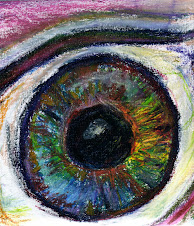When a student has a delay in the developmental visual perceptual skill of visual figure ground, they may not be able to space the letters within words adequately. First graders whose letters vary widely in size may not be aware of how their work differs from the model because of delays in the development of their visual processing skills. Students who put extra wide gaps between letters within words or between words within a line may also be attempting to cope with an underdeveloped set of visual perceptual skills.
Vision is much more than the ability to see clearly at near and in the distance. It involves gathering visual information, intake skills; interpreting visual information, processing skills; and responding to visual information, visual motor integration skills.
The root of a student's difficulty, frustration, dislike of, and inaccuracy with reading or writing could be their visual skills. In fact, even when a student passes a vision screening, they could still have undetected learning-related visual challenges.
If they do not have independent, automatic, voluntary control of their eye muscles, they will have difficulty with gathering visual information. This aspect of vision can also be impacted by poor eye teaming skills.
If they do not have effective strategies for processing the visual information that the eyes send to the retina, they will have difficulty recognizing, remembering, or manipulating it.
If either the visual intake skills or the visual processing skills are under-developed, they will have difficulty with the motor response such as writing a word neatly, or finding the beginning of the next line, or hitting a baseball.
Teachers and parents are the first line of intervention when a student has a learning-related visual issue. If you notice that a student has a consistent problem with a certain type of assignment, ask the student what they think is going on before you tell them how to fix it. Then make sure to arrange a comprehensive vision examination with a developmental optometrist who is experienced with children and binocular vision. The doctor will be able to recommend an assortment of options for how to address any learning-related visual diagnosis with glasses, in-office vision therapy, or by suggesting activities for you to do with the student at home or in the classroom.
When otherwise healthy, intelligent, articulate, and curious children experience difficulty in academics, suspect that the problem has a visual root. At least, rule out any learning-related visual problem by taking them to a developmental optometrist for a thorough check-up.
Subscribe to:
Post Comments (Atom)





No comments:
Post a Comment